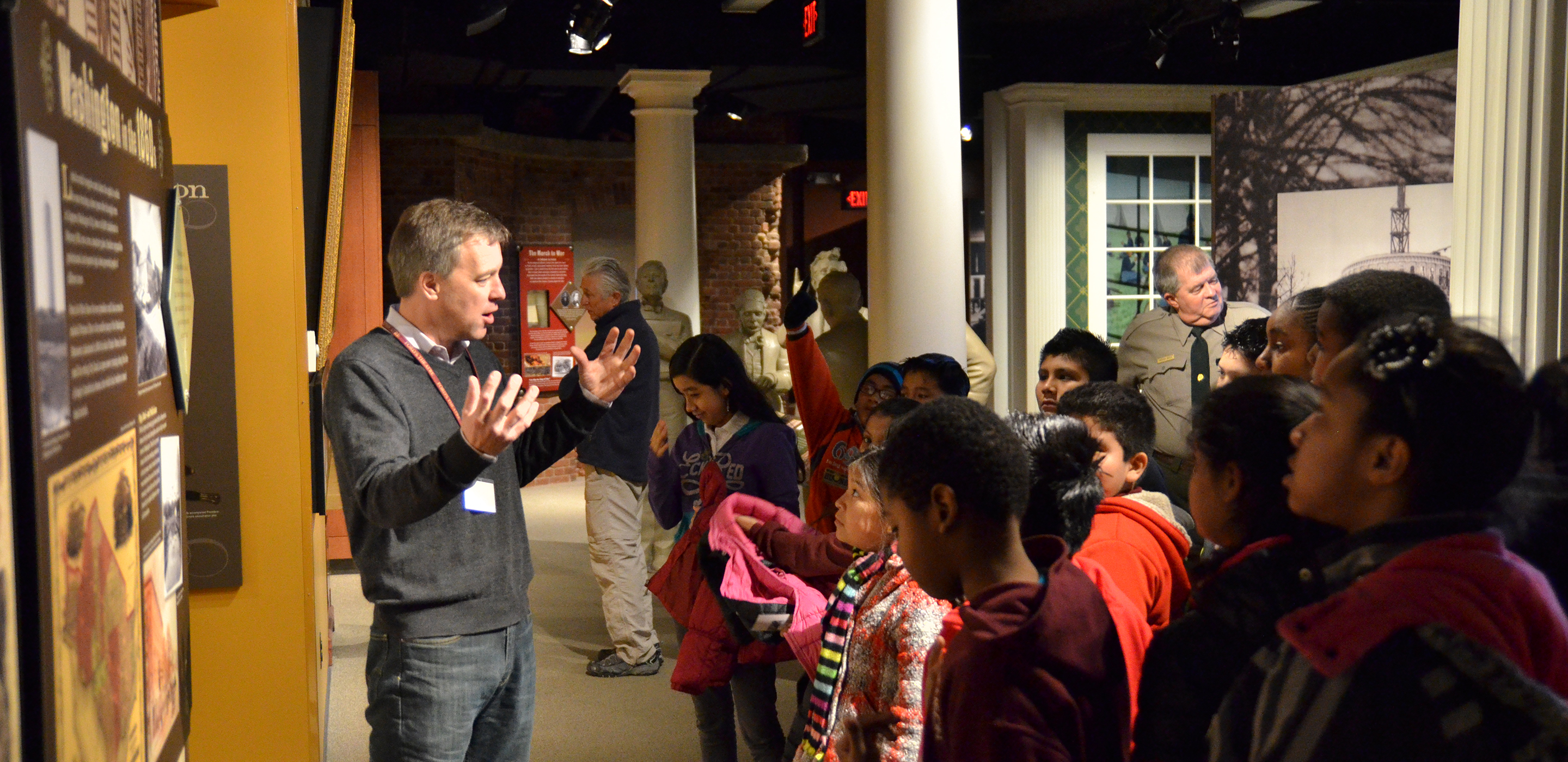
How to make the most out of a school trip to Ford’s Theatre
When you work at Ford’s Theatre, it is easy for Abraham Lincoln to become a favorite president. Every part of our jobs (whether that’s a staff meeting or an email chain) seems to offer new insight on Lincoln, his assassination and his legacy. But for the hundreds of thousands of students who come to our campus each school year, Lincoln’s presidency and his assassination at Ford’s Theatre may be only a small part of their study of American history. How can you make sure that your group is getting the most out of a trip to Ford’s Theatre?
Set the Stage: Help children understand the “beginning” of the story.
It’s tempting to start the assassination story with Lincoln’s dramatic (and tardy) entrance to Our American Cousin. But that was not the beginning.

Instead, start by explaining that D.C. was the frontlines of the Civil War. President Lincoln even came under fire when Confederate forces attacked the city of Washington during the Battle of Fort Stevens. Talk about how in the wake of Southern surrender, many in Washington, D.C. were overjoyed. Discuss how Booth was in the crowd outside the White House for Lincoln’s speech on April 11, 1865, and upon hearing Lincoln suggest voting rights for some African-American men, Booth snarled, “By God, I’ll run him through. That’s the last speech he’ll ever give.”
Most importantly, stress the motivation of the crime – John Wilkes Booth was a racist who abhorred Lincoln’s view for the future. His views were so strong that he turned to murder. John Wilkes Booth’s plot was not simply to kill a man, it was a plot to destroy the possibility of a more equal America.
Keep Kids Engaged by Weaving a Complex Tale: John Wilkes Booth didn’t just want to kill Lincoln, he wanted to decapitate the U.S. government.
Though history often only remembers the murder in Ford’s Theatre, John Wilkes Booth had hatched a plot that was supposed to unfold throughout Washington, D.C. The night of the assassination, Booth’s fellow conspirators had plans to kill Vice President Andrew Johnson and Secretary of State William H. Seward (both attempts ultimately failed).
Help kids understand that John Wilkes Booth’s aim was not to simply kill the president. He wanted to send the U.S. government into chaos and buy the Confederacy time to reorganize and continue the fight.
Discuss whether Booth’s plot was a success. Take into account current events.
One of our most-asked questions is, “What if Lincoln had lived?” Unfortunately, we can’t really answer that. But we can ask the inverse question, “How did Booth’s actions affect Reconstruction and the rest of American history?”

First, discuss the ways in which Booth failed. Ultimately, Booth did not bring about the resurgence of the Confederacy. He did not topple the United States government, and American history certainly does not remember him as a hero.
But it is also important to discuss the ways in which Booth changed history. Share with kids how the nation mourned when President Lincoln died and how large his legacy looms in American politics. Ask kids how they think Reconstruction might have been different if Lincoln had lived.
Make sure to tie the What-Ifs to current events. Is our world today affected by John Wilkes Booth’s actions? How does the legacy of slavery and emancipation affect us today? Most importantly, how does Lincoln’s legacy still affect us 150 years later?
If our Book Tower is any indication, the life and legacy of our 16th president make for a really good story. Kids especially love a suspenseful tale and Booth’s treasonous conspiracy to bring down the government certainly obliges them.
But a field trip to Ford’s Theatre can and should be more than just a good story. A field trip to Ford’s should begin complex discussions about why such a crime took place and how we feel its ramifications even today.
Don’t let distance stop you from experiencing a field trip at Ford’s Theatre.
Anali Alegria is Communications Associate and Alex Wood is Education Programs Manager at Ford’s Theatre. Both are big believers in the importance of visits to Ford’s (for kids and adults).

